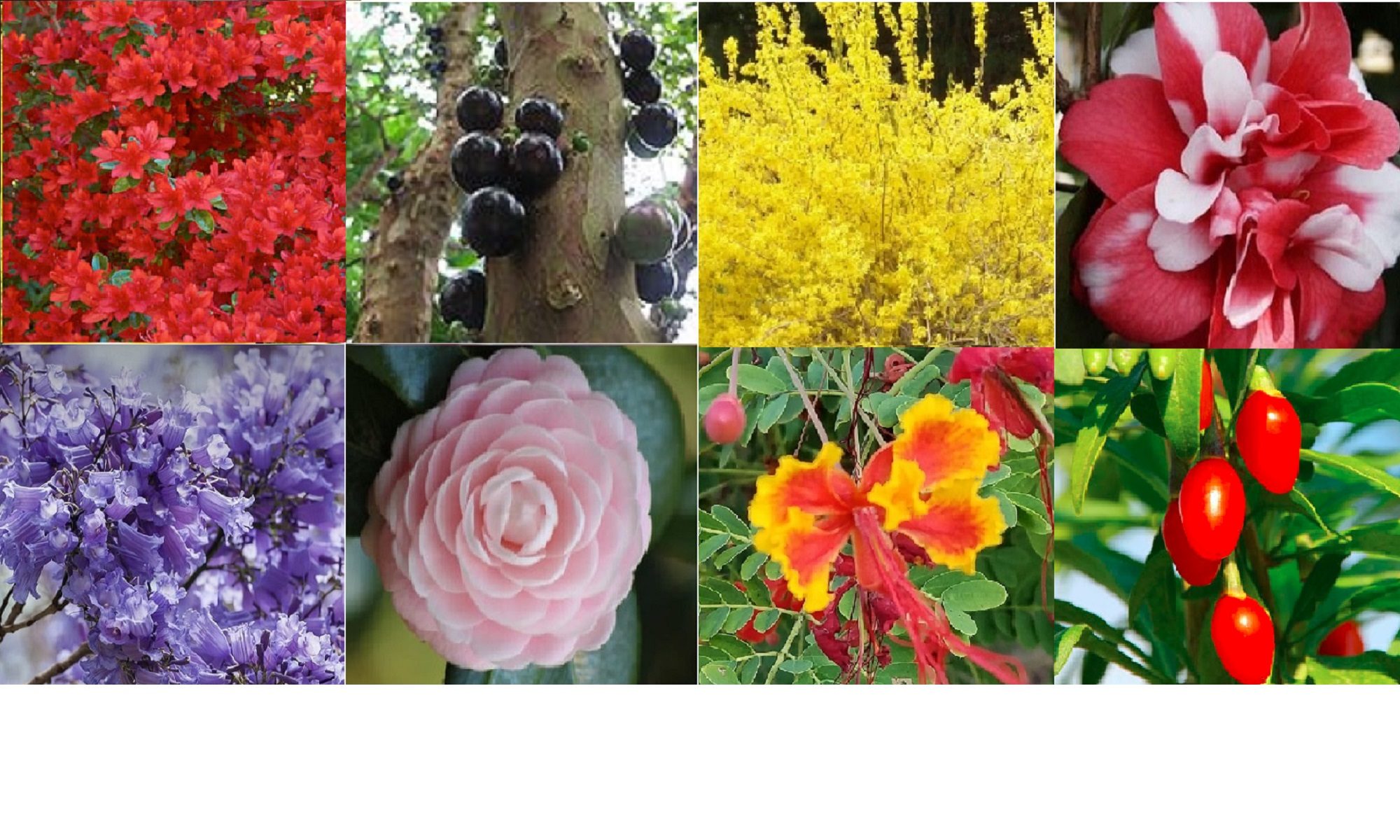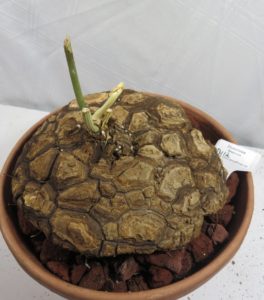 The show stopping Dwarf Flamboyant or caesalpinina pulcherrima makes a great container plant and/or bonsai. The plant also know as dwarf Poinciana, peacock flower, Gulmohar dwarf Flamboyant or pride of Barbados grows 12-15 feet tall in the ground. Most container grown average 5 to 6 feet (20 gallon pots) tall and 4 to 5 feet wide. The dwarf flamboyant grows as a tall bush with lower areas devoid of branches.
The show stopping Dwarf Flamboyant or caesalpinina pulcherrima makes a great container plant and/or bonsai. The plant also know as dwarf Poinciana, peacock flower, Gulmohar dwarf Flamboyant or pride of Barbados grows 12-15 feet tall in the ground. Most container grown average 5 to 6 feet (20 gallon pots) tall and 4 to 5 feet wide. The dwarf flamboyant grows as a tall bush with lower areas devoid of branches.
Here is southeast Florida they bloom just about year around. In other areas, expect spring through late summer blooming. The dwarf Poinciana tolerates pruning well so they would make great bonsai plants too. The flowers are very showy that are multi-color red, orange with some yellow very. The leaves are small fern like and resembles the Royal Poinciana or Flamboyant tree.
Growing the Dwarf Flamboyant Plant
The Dwarf Poinciana (dwarf flamboyant) requires a tropical or near-tropical climate to grow in ground. It will handle salty and drought conditions. In the ground it loves fast draining soil and it will drop it leaves in the winter dormant period.
Prune the pant in late October or after first blooming not in spring. If you prune in spring you will lose several months of flowering. When your plants are young pick off the seed pods to force energy to plant grown not see growth. Yes, you can reduce the number of trunks and create bonsai plants.
In rainy areas add time released fertilizer once every three months. Fertilized with Dyna-Gro Foliage from spring through fall.
If container grown let it dry out between watering. Water to moisten the soil and make sure the soil drains well. Do not let it get soggy. When growing as a bonsai plant and using bonsai soil then make sure it does not dry out completely except during winter. Watering: The plant is drought tolerant when mature during the winter time. In the summer, since it’s a tropical plant, it will handle lots of water.
It is not cold tolerant so during cold periods it will need to be brought indoors (dormant periods). Yes, these are available through Adeniumrose Company LLC. get yours now!


